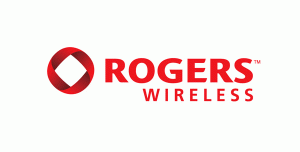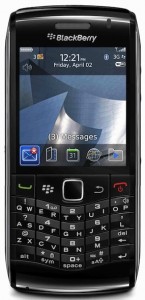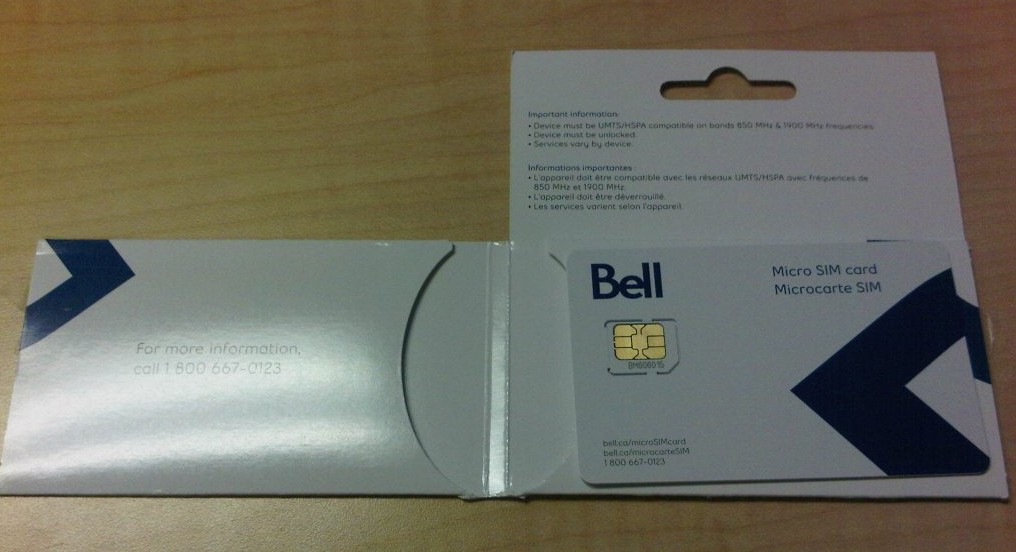Follow me on TwitterRSS Feeds
Bell Mobility

A Weekend With Sense: First Impressions of Bell’s HTC Legend
Jun 22nd
I am sitting, as I have done the last few days, with three phones in front of me: a BlackBerry Bold 9700, a HTC Nexus One, and a HTC Legend.
Each have their own shortfalls and virtues; each is attractive in its own way; and certainly, each appeals to a different type of consumer. To have all three is to show the current breadth of choice in the consumer smartphone market. Certainly, to understand that the HTC Legend and Nexus One run Android is to miss the point. I purchased the Nexus One using Google’s short-lived online store, off-contract, unlocked, and completely open to root, hack, customize and play with. It’s proven to be a reliable phone, surviving slip after fall after puddle, and is what I would consider the closest to a true computer replacement ever released in a cellphone.
The BlackBerry is a messager’s dream. The keyboard, after years of use, is second nature, an extension of my two very active thumbs. Without thinking, they dance along the keyboard like upon a piano, spittin’ out lyrics, if you will. It is the phone I never leave home without, since it is the one I can rely on to actually be used as a phone, as a communications device. It serves its purpose. I no longer lust after ghost apps, ones that I would find on other platforms but are, like an amputated limb, missing from the App World. Once you come to terms with the BlackBerry as a wonderfully efficient email and messaging device, and little else, it is perhaps the best one ever made.
The HTC Legend is smack in the middle of the two aforementioned devices. It is beautiful: created from one piece of brushed aluminum, to hold it in your hand is to cradle a fine jewel or piece of art. Even without turning it on, its subtle combination of design excellence and austere presentation promotes the best of industrial smartphone design. There is, to be frank, nothing wrong with the device’s design. I could quibble about how, when removing the SIM card, your phone will turn off, since one side of the battery connector is attached the the piece, on the bottom of the device, that is taken off to get to the SIM card/microSD card. But that is necessitated by the design; one look at the back side of the Legend is justification enough for this design choice. As an evolution from the attractive, though markedly cheaper-looking HTC Hero, the Legend is a step in the right direction: it promotes build quality in the face of higher production and marketing costs.
The software, compared to the Hero, is also an evolutionary step in the right direction. The jump from Android 1.5 to 2.1 is the difference, even on similar hardware, between a slow-moving steam engine and a bullet train. The whole OS infrastructure has been made more efficient. The additions of voice-recognition throughout the OS, of multi-touch within the browser, maps and gallery apps, and the improvements made to HTC’s Sense UI, are unifying ingredients that make Android feel like much more of a well-rounded package. The problems that exist in stock Android builds, even the latest 2.2 build, are taken up by Sense with panache. Copy and paste mimic Apple’s implementation (a little too much, IMO); the HTC_IME keyboard is incredible; their mail app is vastly superior to stock Android; their widgets do not hamper your interactions with the OS but improve on them. I particularly enjoy the FriendStream widget, which provides, on the homescreen, Twitter, Facebook and Flickr feeds, in a clean, intuitive way.
Overall, the phone is stable, and speedy enough to engage in some multitasking without bogging down the system. The 600MHZ processor does not strain under most conditions, since the screen resolution is lower than on most high-end Android devices. You wouldn’t know it to look, though, since the AMOLED screen is sharp, bright and quite pleasant to look at, even in sunlight. I did notice the colours wash out quite a bit in the sun, but less so than on the Nexus One.
There was some slowdown, though I expect it is app-related more than problems with the OS. When typing in a text field in the browser, there is some nasty slowdown with the keyboard. The keyboard would flake out randomly, and then Force Close, the Android equivalent of a BSOD. It usually starts right back up, but it’s a consistent problem and one I hope improves with updates.
I noticed a problem with battery life, too. As a fairly low-use phone, I expected at least a full day out of a charge. Instead, even with minimal use from the browser, camera, SMS and phone calls, the battery would expire in 4-6 hours. Not acceptable for a device aimed at the mainstream. While I’m sure I could improve the longevity by keeping the brightness to a minimum and turning off all background apps, most users will leave the settings on default, such as auto-brightness, and install an RSS reader, Facebook, Twitter, etc., all of which use background resources every one in a while.
Bell’s network, in the two cities I used the device, Toronto and Montreal, and in between on the 401, was rock solid. I found a couple dead spots on the highway, but it would usually spring right back to life within a couple minutes. The speed was always good whether I was downloading apps or uploading pictures. I will say it again: Bell’s network is definitely the fastest 3G network in Canada at the moment.
The camera takes sharp pictures with its 5MP sensor, and the LED flash is a welcome addition. HTC’s camera app is much better than the stock Android version as well, and is so beloved among enthusiasts, it has been ported over to work with rooted stock devices such as the Nexus One. Its small size is perfect to slip in an out of a pocket to take quick snaps, and the optical trackpad works wonders as a shutter click.
Speaking of its small size, I cannot convey how wonderful this phone feels in your hands. It is a pleasure to use. Without exploding with hyperbole, I don’t think I have ever been more comfortable using a phone. It is noticeably lighter and smaller than the iPhone and Nexus One, thinner than both, and despite its smaller screen size, because of the text’s sharpness, I never missed the higher resolution of the N1. There is something to be said for chemistry between a person and his or her phone; it may seem trifling, but the phone you buy is an important decision: you’re going to use it for hours a day, every day. For it to feel comfortable and inviting in your hands is essential, and something I believe people overlook when making their decision.
There are things I’ve overlooked. I will get to them in the video review. Suffice it to that, however, that for $79.99 on a 3-year term, the HTC Legend is a bargain on either Bell or Virgin Mobile. For $399 at Bell (or $350 at Virgin Mobile), you can purchase it outright, unlock it and use it on any Canadian provider, or AT&T in the US. Until the Desire arrives in its NAM 3G form, this is the most desirable Android device in Canada: sorry Milestone, Liquid E et al.
For more information on the device, check out HTC’s page, and to get it on Bell, hit up their store.
Bell Sets Release Date For The HTC Legend
Jun 14th
Just days after launching the Legend on its discount brand Virgin Mobile, Mobile Syrup is reporting that Bell plans to launch their own version on June 16th. Bell is positioning the device to compete with Rogers’ recently released Sony Ericsson X10 and Telus’s HTC Hero, with pricing set at $79.95 on a 3-year contract, $249.95 on a 2-year; $349.95 on a 1-year and $399.95 no contract (Just $50 above the asking price of Virgin).
Apparently the Virgin-sold handset, while SIM-locked, will work on Bell’s network without need for an unlock code, though we have yet to confirm this. More to come.
[via MobileSyrup]
Follow me on twitterThere’s Something About Competition: Rogers and Bell, a Network Test
Jun 11th
There is something to be said for competition. For many years in Canada, we did not have much competition in the cellular world. There was only one choice if you wanted the best phones, with the ability to switch your SIM card, and therefore save yourself a lot of hassle, if you bought a new phone. More importantly, most of the “good” phones, those coming from Asian companies like Nokia and HTC, were made only for GSM networks.
Rogers was the company everyone relied on to be the faster network with the better phones. When the iPhone 3G was released in 2008, the network was inundated with new customers who wanted Apple’s Wonderphone on a faster network. Bell and Telus, the two other incumbent Canadian national carriers, were operating aging CDMA networks. Their speeds were limited, as well as their ability to give customers the choice between switching phones easily. It took a call to customer service, which usually involved waiting on hold for a long time, to get your phone switched, and even then, the number of choices was quite limited. CDMA seemed on the way out (note, with Android proliferating and Sprint and Verizon each getting exclusive, high-end Android devices lately, there is no doubt that the technology is not going down without a fight).
In 2008, we started hearing inklings of a new GSM network being built in Canada. Bell and Telus would join forces and install the fastest, most comprehensive 3G network in Canada. It’s top speeds would triple Rogers’ at the time, and would provide more service to more Canadians. The network launched in late 2009 to much fanfare, though to the average customer, the emphasis on speed was touted over anything else. With the new network, you would get faster speeds in more places. What they didn’t tell you, however, was that because they were not building on top of any existing infrastructure like Rogers was doing, building their 3G network on top of a very mature 2G network, if you chose to go with Bell or Telus and went out of 3G range, there would be no service at all. For most people this would be no problem, but it does bring to light the advantage of experience and the limitations of having the latest and greatest.
Which brings me to my test today. I wanted to check the claims that Bell and Telus’ new network is indeed the fastest in Canada. For most people the speed differences are going to be negligible. Rogers 3G offers 3.6Mbp/s, while its competitors offer double that speed. I recently bought a Google Nexus One phone, which is factory unlocked, and is compatible with Bell and Rogers 3G. I was using it on Rogers for many months with no issues, but when I activated my Bell account, I decided to pop in the SIM and see how it felt.
The first thing I noticed that was the device felt much faster. Loading anything with data was much quicker; websites, Twitter, downloads. But I wanted to be sure.
First the breakdown: real-world feel, and then actual benchmarks using Speedtest.net’s Android app:
With Bell, websites load noticeably faster and downloads exceed hundreds of KB/s. When loading Touiteur, a Twitter client, I counted an average of 3 seconds to reload the timeline, while Rogers often took more than 5 seconds. Reception as well, in downtown Toronto, seemed to be more consistent with Bell. Though I realize that there is no 2G network to fall back on, with such a comprehensive network in large urban areas, I have yet to hit a dead zone in the GTA.
Loading Touiteur:
- Bell: 3.2s
- Rogers: 5.3s
Loading NYTimes.com
- Bell: 6.8s
- Rogers: 8.3s
Speedtest.net app
Test 1 - Thornhill, Ontario, Thursday 8pm
- Bell: 1.6Mbp/s Down, 0.95Mbp/s Up
- Rogers: 1.3Mbp/s Down, 0.73Mbp/s Up
Test 2 - Downtown Toronto, Friday 10am
- Bell: 3.8Mbp/s Down, 1.79Mbp/s Up
- Rogers: 2.3Mbp/s Down, 0.79Mbp/s Up
As you can see, it’s fairly consistent. The time it takes for data to kick in is sometimes faster on Bell, sometimes on Rogers. This is a direct result of the high latency associated with 3G networks. It will only improve once 4G networks become the standard; this may not happen, at least in Canada, until 2011 or 2012.
I am happy with Bell’s network. I think they have done an excellent job, at least where I live, in bringing consistently fast network performance.
What’s better though is that both companies, and Telus, the third major carrier, are playing on equal footing these days, and it means better prices for consumers. In spite of the fact that they do not seek to compete in the realm of monthly tariffs, that they are able to offer the latest and greatest GSM phones is already helping bring down the cost of subsidized handsets. Many people complain about how Rogers/Telus/Bell are not competitive, and that Canadians pay more for our monthly voice and data packages. I believe, for the most part, that is true. But now that the requisite infrastructure exists to allow for the proliferation of high-speed 3G and 4G HSPA+ and LTE/WiMAX networks throughout the country, voice and data are accessible to a greater number of people, and the fact that there are new players in the market brings, for the first time, true alternatives.
Surely, there is something about competition.
Virgin Mobile Releasing HTC Legend June 11th, Android Fanboys Do A Little Dance
Jun 9th
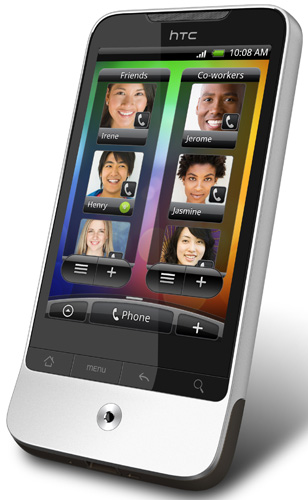 Canadians seem to be on a roll with good Android phone releases. Sure, the US has the HTC Incredible and EVO 4G, but they’re CDMA devices and thus not transferable to other networks. GSM versions of their cousins, the HTC Legend and Desire, are being released in Canada in the near future, to much fanfare.
Canadians seem to be on a roll with good Android phone releases. Sure, the US has the HTC Incredible and EVO 4G, but they’re CDMA devices and thus not transferable to other networks. GSM versions of their cousins, the HTC Legend and Desire, are being released in Canada in the near future, to much fanfare.
We were astounded to find out Bell, not Telus, was releasing the Hero successor, the Legend, and now it seems their subsidiary, and supposed “discount” brand, Virgin Mobile, will be releasing the phone this Friday, June 11th, for a very reasonable $79.99 on a 3-year contract, and $349.99 outright.
The Legend is a worthy successor to the Hero, beefing up a number of the specs and coming stock with Android 2.1 and HTC’s own Sense UI skin. The notable aspect of its release is that it’s the first Android 2.1 Sense phone released for North American 3G networks. This could potentially run on AT&T if it was unlocked.
Look for this in Bell stores on June 16th for the same price.
(via Mobile Syrup)

Bell Really, REALLY Wants You to Buy a Palm Pre
Jun 3rd
We already know how bad Bell wants you to own a Palm Pre and now they have launched a new promotion making the deal even sweeter. Bell has decided that giving the Pre away for free (on a 3-year contract of course) wasn’t enough and now is offering people $15 off their monthly bill if they pick up a Pre on contract. This adds up to $180 saved per year, and that’s not taking into account the fact that the phone is completely free.
For whatever reason, if you have been waiting to pull the trigger on snagging a Pre on Bell, I don’t know how much better it can get than this. As always, you will be signing a three-year contract to get this great deal so if you can stomach the thought of having a year-old device for the next three years then this is your chance.
If there was any uncertainty that Bell is trying to sell off as many Pre’s as possible, then this certainly confirms that. Whether it’s an attempt to alleviate a large backlog of units or just trying to get on Palm’s (and possibly HP’s) good side is still unclear.
Check out the promotion here.
Bell Getting HTC Legend June 16th, Telus Drops Price of Hero to Compete
Jun 2nd
It was a shock to find out that Bell was getting the successor to the HTC Hero. But now that the shock has largely worn off, I can rest easy knowing that, on June 16th, I can bang out $400 for one of these bad boys off-contract.
The HTC Legend is one hell of a device. Leaving off where the HTC Hero succeeded, the specs are only slightly better, with a slightly faster processor, more RAM, better camera with flash; but the best part of the phone is the body. Crafted from one piece of aluminum, it feels about as sleek and robust as the iPhone 3GS. It’s a phone to believe in.
Not to mention that this will be the first phone brought to Canada with HTC’s updated Sense UI, which they brought to Android 2.1 earlier this year.
Telus probably saw this launch a mile away, and seeing that Bell was launching the Legend at $79.95 on a 3-year contract, they have dropped the price of the Hero to $29.99 to compete. The Hero is still a great phone, and I recommend it over the Legend if you’re into hacking and custom ROMs, as there is a very active development community around the Hero.
The comparison, however, to the Sony Ericsson Xperia X10 is not really fair. The X10 has a much better screen than the two other devices, and runs stock Android (with a couple additions) over HTC’s entries. That doesn’t mean that I would recommend the X10 over the Legend, because I don’t. Even with its low-resolution screen, the fact that it is AMOLED gives it added brightness and clarify over the TFT equivalent.
Definitely looking forward to reviewing this unit!
(via Mobile Syrup)
Bell Finally Sets A Release Date For The Pearl 3G?
Jun 2nd
After inventory undisclosed delays (it was originally scheduled to be released May 13th) and watching Telus and Rogers both release their versions in various colors, Bell has finally set a release date for the sure-hit Pearl 9100. An internal document sent to Mobile Syrup states a June 4th release with a $29.95 termed price tag or $329.95 outright. And although not confirmed, expect Bell’s discount affiliate Virgin Mobile to release it at the same time and price point as well.
[via Mobile Syrup]
Follow me on twitter
Bell Micro SIM Emerges
May 28th
It seems like Bell’s iPad data plans were tacked on at the very last minute, as there was, unlike Rogers, very little fanfare when announced earlier this week. Here is a shot of the new Micro SIM released today in conjunction with the release of the iPad in Canada.
We have already seen Telus’ and Rogers’ versions, so here is a quick look at Bell’s offerings.
Video Overview: Bell Motorola DEXT
May 27th
This phone has a lot of potential. It’s well-built and well-designed. Its hardware keyboard is usable, and even intuitive, and that’s saying something coming from the Milestone. Though it runs Android 1.5, what Moto has done with the MOTOBLUR skin is interesting: they have given people with limited time a way to view many snippets of information quickly. It’s a good messaging phone and a decent Android experience.
Let us know what you think!

Bell Really Wants You to Buy The Palm Pre (Or Have It For Free, and Sign a Contract)
May 17th
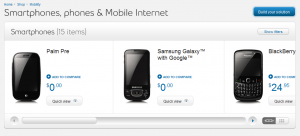
Could Bell have a bit too much stock of the Palm Pre? In a final effort to move units the beleaguered phone has been put on the front of the company’s mobile website, priced at an attractive $0.
Only the marketing teams knows for sure, but you will notice where once was the Blackberry Bold 9700 is now the Palm Pre. Hopefully this change will drive sales for the device, though realistically, if someone hasn’t already purchased the aging handset, it’s unlikely this move will affect your decision. I mean, who buys phones online anyway? I have used the Pre as a primary device and being someone who isn’t too reliant on apps, loved the device.
To read more on The Palm Pre or some of the rate plans from Bell, click here.
[Via Mobile Syrup]
Follow me on twitter

















